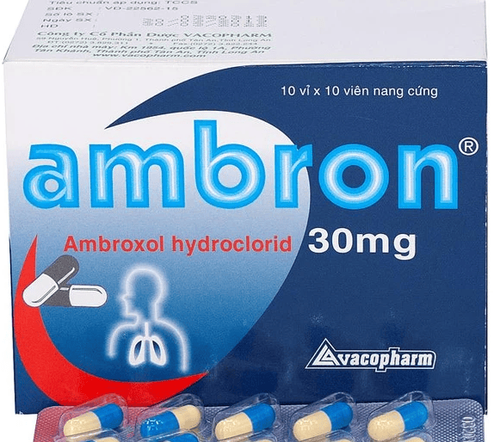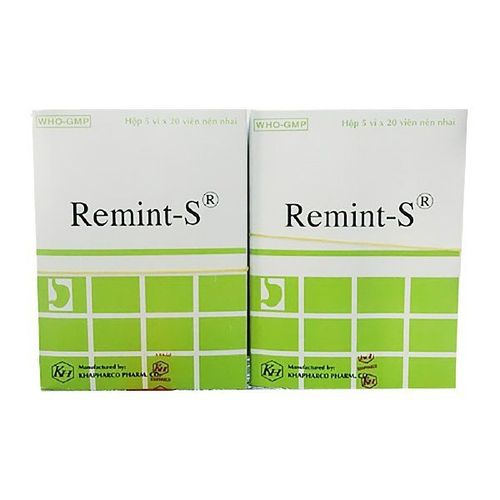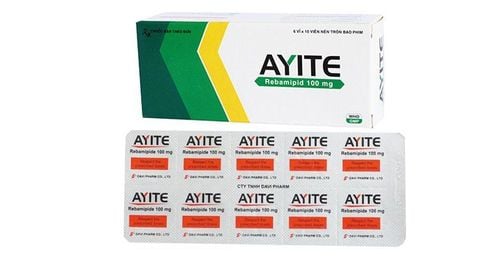This is an automatically translated article.
Prazogood medicine has the main ingredient Esomeprazole magnesium dihydrate and other excipients. Prazogood is used in the treatment of gastroesophageal reflux disease (GERD), peptic ulcers, and Zollinger-Ellison syndrome.
1. What is Prazogood?
Prazogood belongs to the group of gastrointestinal drugs, prepared in the form of enteric coated tablets packed in boxes of 2 blisters x 10 tablets.
Prazogood has the main ingredient Esomeprazole magnesium dihydrate 40mg and other excipients in the drug.
2. What is the use of Prazogood?
Prazogood drug is used in the following cases:
Treatment of GERD syndrome - gastroesophageal reflux disease. Treatment of gastrointestinal ulcers. Treatment of Zollinger-Ellison syndrome.
3. Dosage - How to take Prazogood
Prazogood tablets should be swallowed whole and should not be crushed or chewed.
Reduce symptoms of acid indigestion.
Use 10 or 20 mg Esomeprazole/day for 2-4 weeks. Treatment of GERD - gastroesophageal reflux disease.
Usual dose: 20mg Esomeprazole x 1 time / day for 4 weeks. Add 4-8 weeks of treatment with Esomeprazole if not completely cured. In case of persistent esophagitis. A dose of 40mg Esomeprazole/day can be used. The maintenance dose after healing of esophagitis is 20mg of Esomeprazole once a day and for acid reflux is 10mg of Esomeprazole/day. Treatment of gastrointestinal ulcers.
Single dose: 20mg Esomeprazole/day, or 40mg Esomeprazole/day in severe cases. Continue Esomeprazole treatment for 4 weeks for duodenal ulcer and 8 weeks for gastric ulcer. Maintenance dose: 10-20 mg of Esomeprazole once a day. To eradicate Helicobacter pylori in peptic ulcers: Take 20mg of Esomeprazole twice a day for 7 days, or 40mg of Esomeprazole once a day for 10 days. Treatment of gastric ulcers caused by non-steroidal anti-inflammatory drugs.
20mg Esomeprazole/day. A dose of 20 mg Esomeprazole/day is also used for prevention in patients with a history of gastrointestinal injury requiring continued non-steroidal anti-inflammatory drug therapy. Zollinger-Ellison syndrome.
60 mg Esomeprazole x 1 time/day, adjusted as needed. Most patients are effectively controlled at doses ranging from 20-120 mg of Esomeprazole/day. Doses of up to 120 mg Esomeprazole 3 times/day may also be used. Doses above 80 mg of Esomeprazole per day should be divided into 2 doses. Prevention of acid aspiration during general anesthesia. Dose of 40mg of Esomeprazole the evening before surgery and an additional 40mg of Esomeprazole 2-6 hours before the procedure. Patients with impaired renal function:
No dose adjustment of Esomeprazole is required in patients with impaired renal function. Patients with liver failure:
Use dose 10-20 mg of Esomeprazole/day. Elderly (> 65 years old):
No dose adjustment of Esomeprazole is required in the elderly. Children:
Experience in the treatment of Prazogood in children is limited.
4. Contraindications to taking Prazogood
Prazogood drug should not be used in cases of patients with hypersensitivity or history of allergy to Esomeprazole, Omeprazole or other Benzimidazole derivatives such as Rabeprazole, Lansoprazol, Pantoprazol or to any of the ingredients of Prazogood.
5. What side effects does Prazogood cause?
During the use of Prazogood, patients may experience some unwanted side effects such as:
Common:
Headache, dizziness; Sleepy; Nausea and vomiting, abdominal distension, abdominal pain, diarrhea and constipation. Uncommon:
Insomnia, fatigue and confusion. Urticaria, itchy skin, skin rash. Increased transaminases. Rare:
Hypersensitivity reactions, sweating, peripheral edema, angioedema, fever and anaphylaxis. Decreased whole blood cells, leukopenia, thrombocytopenia, agranulocytosis. Confusion, agitation and depression. Hallucinations in the elderly. Hearing disorder. Large breasts in men. Gastritis, dry mouth and candida infections. Hepatitis, with or without jaundice, encephalopathy in liver failure. Bronchospasm. Joint pain, muscle pain. Interstitial nephritis. If you experience these symptoms, the patient should stop using Prazogood and notify the doctor for appropriate treatment.
6. Precautions when using Prazogood
During treatment with Prazogood, symptoms of severe weight loss, difficulty swallowing, prolonged vomiting, vomiting blood or black stools, suspected or ongoing stomach ulcer. Patients should exclude the possibility of malignancy because treatment with Prazogood can alleviate symptoms and delay diagnosis. Pregnant women: Although in experimental studies, Esomeprazole did not have the potential to cause malformations and toxicity to the fetus, but Prazogood should not be used during pregnancy, especially in the first 3 months. Lactation: Prazogood is not recommended for use in nursing mothers. Esomeprazole has almost no effect on the ability to drive or use machines. Undesirable effects such as dizziness and visual disturbances may occur when using Esomeprazole. At that time, patients should not drive or operate machinery while taking Prazogood.













